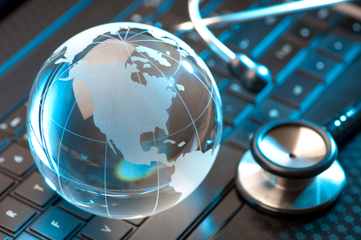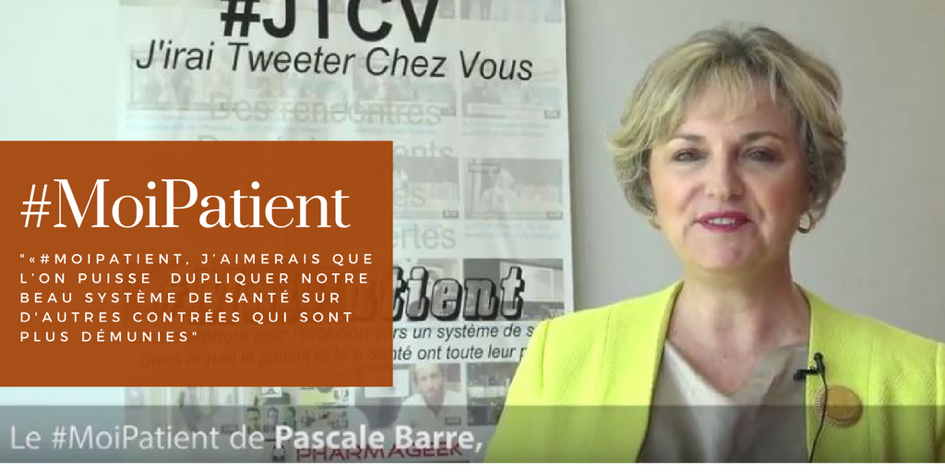Cancer du sein : le pharmacien revendique un rôle à jouer
24/10/2013Study shows Apple’s iOS medical apps have more medical professional involvement than Google apps
24/10/2013Social Media for Physicians: Not a Complete Solution, but Certainly not Useless
Imagine, you’re scanning through your Facebook feed and you notice a photo of your primary care doctor dressed up for a night-out, posing in her new heels and skimpy dress in front of the city’s hottest club. You browse through your Twitter feed to see your gastroenterologist posting more articles about fecal transplants. Better yet, he sends you a tweet asking if your bowel movements have improved since your last visit. Unfortunately, he is new to Twitter and didn’t realize you have to use a “direct message” to keep that information private! Last, you can’t help but feel a sense of envy when your endocrinologist is constantly posting pictures of her fancy meals and exotic vacations on Instagram.
Maybe connecting with your doctor on social media isn’t such a glamorous idea. After all, it is presumably rare that people connect with their Starbucks baristas, plumbers, or lawyers, so why would anyone want to connect with their physician?
Some argue that social media could be a good environment for doctors to stay connected with their patients. However, ponder the reasons why anyone would want to speak with their physician. Generally it is because they have a new problem, they have an existing problem that is getting worse, or because they were instructed to follow-up on a particular issue. Only the third reason seems to be a legitimate task that could be carried out online. That said, social media might not be the best option.
A better method would be to use a secure platform, such as a web portal, in which the patient has a unique username and password. Some innovative companies are already employing this concept. If companies like NueMD can develop EHR software that securely stores electronic health information about individual patients or populations, a system like this should be a n0brainer.
It is probably safe to say that doctors could be a lot more ambitious in using technology, but that doesn’t necessarily need to be social media. Not to mention, the return on investment (ROI) on time spent using social media sites doesn’t seem to be that great either. In his recent article on TheHappyMD.com, Dr. Drummond makes a great case about why social media use by physicians is a generally waste of time. He even goes as far as saying that social media consultants are the majority of those encouraging doctors to use Facebook, Twitter, etc.
Nonetheless, there has to be some use for social media in healthcare, right? Here are some practical uses of these platforms by physicians:
1. Education
Many physicians love to educate and take pleasure in informing populations of particular studies, innovations, and other exciting things happening in medicine. Kevin Pho, MD states that the best approach to using social media as a physician is, “…to connect with patients collectively, but not individually.” Ultimately, everyone could benefit by having at least one healthy influence within their social feeds.
2. Collaboration
The term “silos” has been used often in the news to describe the lack of communication within today’s healthcare system. It is obvious that both patients and physicians desire more collaboration between providers. A specific social network, Doximity, which has been developed by the founder of Epocrates, Jeff Tangney, acts as a large, interactive database of nearly all providers in the nation. After activating their Doximity account, doctors can update their contact information, professional interests, and publications, all of which will be shared within the network that is only accessible by other providers. Physicians can also use Twitter to continue conversations after conventions and presentations.
3. Networking
LinkedIn is a great place for doctors to provide an online version of their curriculum vitae (CV). Even if one isn’t actively sharing ideas on the LinkedIn feed, the option still exists to use the network as an online directory of potential business or research partners. Additionally, they could use Facebook groups to find colleagues with similar interests.
4. Logistics
Individual practitioners, groups of physicians, and health systems could all use social media to update the vast majority of their patients about important announcements. Offices could use Twitter to alert patients about any serious delays for the day or provide them with realistic expectations for scheduling their next appointment. Health systems, such as the UPMC of Pittsburgh, PA, are already using the technology for news and events.
5. Therapy
Being a physician isn’t easy. The frustrations go beyond noncompliant patients or difficult cases. Now, more than ever, physicians are dealing with stress from many sources, including insurers, employers, lawyers, and recently, politicians. Doctors can use social media to vent about these new obstacles in patient-care. They can find comfort in knowing that their colleagues are dealing with the same stresses. Last, issues with particular systems can become known to the public by articles or blogs written by frustrated doctors. After all, half the battle of solving a problem is discovering that there is one.
In summary, the current hype encouraging physicians to use social networks is certainly a little overdone. In most cases, doctors can do without it. However, there are appropriate uses of the technology and physicians would be wise to not completely abstain from using it.
See on www.business2community.com




